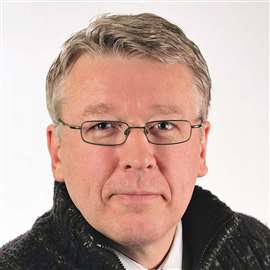2016 Power Generation Order Survey
28 December 2016

Diesel & Gas Turbine Worldwide’s Power Generation Order Survey is part one of three surveys designed to provide details on the markets of larger reciprocating engines, steam turbines and gas turbines used in power generation, marine propulsion and mechanical drive applications.
We divide the data into three reports in order to provide a more in-depth look at each market segment. The Power Generation Order Survey examines reciprocating engines, steam turbines and gas turbines for power generation service. The Mechanical Drive Order Survey is devoted to engine orders for mechanical drive applications including pumps, compressors, oil exploration machinery, rail and other industrial applications. The Marine Propulsion Order Survey examines mechanical drive, auxiliary and diesel-electric marine propulsions systems. The Mechanical Drive and Marine Propulsion surveys will appear soon on
Mech Drive_10 year history charts_FINAL_2015 Monday night (1)Procedures
The Power Generation Order Survey includes reciprocating engines starting at 500 kW; gas turbines rated 1.0 MW and above and steam turbines.
New orders are broken into types of generating service — standby, peaking and continuous. Manufacturers provide their own distinction between peaking and standby service; however, standby service typically refers to power generation in backup or emergency service. Peaking service is associated with power generation used in conjunction with local utilities. The time that peak service operates is dependent on the condition of the local electrical grid. Continuous service typically refers to continuous power generation, stopping only for maintenance or unexpected outages.
An accompanying table shows the geographic breakdown we provide OEMs, highlighting the specific countries within the reported geographic regions.
Every effort is made to ensure that this survey is as complete and comprehensive as possible and would not have the level of detail it contains without the generous contributions of the participating companies. An accompanying table identifies those companies that participated in the 2015 survey.
It is important to note, some units reported in the 2015 Power Generation Order Survey did not have complete information. In some cases OEMs chose not to provide generating service, fuel type or geography for some of their reported orders.
Overview
Total orders (all reported driver types) reported in the 2015 Power Generation Order Survey (2014 data) were down only 1% compared to those reported in last year’s survey (2013 data). Good news considering the current state of the global energy landscape. Low oil prices have negatively impacted myriad industries. Prime movers designated for power generation applications are no exception. Orders began to taper near year end as oil prices continued to set new lows. More and more companies postponed project, delayed orders and adopted a “wait and see” attitude toward capital spending.
Reciprocating engine orders totaled 31 605 units, down roughly 1% from to last year’s count.
Gas turbine orders fell by 20% compared to last year’s report. The 2015 Survey reveals 596 gas turbine orders while 710 orders were reported in the 2014 Survey.
A bright spot in the 2015 Power Generation Order Survey is that steam turbine orders rose in 2014, setting a new high-water mark for steam turbine orders reported in our annual survey. Steam turbine orders logged 181 units, an 11% increase compared to the 2014 Survey.
North America once again claimed the top geographic location for all reported driver types in 2014 with 6404 units ordered. Shale fields in the U.S. continue to be a dominating factor. China’s economic woes came into play as the Far East dropped from second place last year to fourth place this year.
Top five regions revealed in the 2015 Power Generation Order Survey are: North America (20%); Middle East (16%); Western Europe (15); Far East (14%) and Southeast Asia & Australia (12%).
Regardless of oil prices, politics and other “short-term” factors, the need for reliable power continues to grow. The International Energy Agency (IEA) predicts energy demand to grow by 37% through 2040 (World Energy Outlook 2014 Fact Sheet, Nov. 2014). Much of that growth will come from natural gas fired plants as nuclear continues to recover from Japan’s Fukushima disaster ongoing retirement of coal-fired plants.
While renewables are gaining traction thanks to advances in technology and affordability, cases like California’s record-setting drought and its dramatic loss of hydroelectric power remind us that we will never live in a renewable-only world (apologies to the green movement).
Time is the constant tell. Just how much the energy industry has been impacted by low oil prices and current economic and political challenges around the globe will be revealed in next year’s order survey. Without a doubt, 2015 will prove to be a pivotal “moment” in prime-mover history.
Diesel, Dual-Fuel And Gas Engine Orders
The number of diesel, dual-fuel and natural gas engines ordered in 2014 totaled 31 605, a decrease of 1% compared to last year’s survey. The majority of orders (55%) were once again in the power range of 500 kW to 1 MW, followed by 1.01 to 2.00 MW range (35%).
The 2015 Survey reveals 50% of the orders received were destined for continuous duty, followed by standby service at 47%. Peaking service represented roughly 2% of the orders.
Engine operating speeds above 1000 r/min comprised 98% of the total units ordered in 2014.
Diesel fuel continued its domination as preferred fuel for reciprocating engines in power generation applications, claiming 90% of the reported engines fuel type. Natural gas represented roughly 9%.
Top geographic locations for diesel, dual-fuel and gas engines were North America (20%), Middle East (16%), Western Europe (15%); Far East (13%) and Southeast Asia & Australia (12%).
The U.S. shale boom continued to keep North America atop the geographic destination list for recips.
The Far East’s drop to fourth place from second place last year can be attributed to declines in China’s power output as its economy continues to struggles.
Gas Turbines
Gas turbine orders reported in the 2015 Survey totaled 569 units, down nearly 20% compared to last year. Gas turbines rated 1.00 to 2.00 MW saw the most activity, accounting for 18% of the orders.
Natural gas was the dominate fuel type (51%), followed by heavy fuel (19%), dual fuel (18%) and diesel fuel (13%).
The Far East was the top geographic location for gas turbine orders (44%). North America claimed the number two spot (14%), followed by the Middle East (10%).
China’s need for clean power continues despite its economic slowdown. Beijing, where pollution averaged more than twice China’s national standard last year, announced plans to close the last of its four major coal-fired power plants. The facilities will be replaced by four gas-fired stations with capacity to supply 2.6 times more electricity than the coal plants.
Steam Turbines
Steam turbine orders totaled 181 units in the 2015 Survey, an increase of 11% compared to last year.
Units rated 1.01 to 5.00 MW saw the most demand, accounting for 39% of all steam turbine orders.
Southern Asia & Australia was the top geographic location (46%), followed by North America (15%) and Far East (8%).
Annual Surveys
On behalf of Diesel & Gas Turbine Worldwide, thank you to all contributors for your continued participation in this annual survey process. It is our hope that the three surveys combined will provide an accurate snapshot of the entire large engine landscape, with fine-tuned detail provided for three market segments through each individual report — power generation, mechanical drive and marine propulsion. Electronic versions of past surveys are available at our website: www.dieselgasturbine.com. Questions, comments and suggestions should be directed to [email protected].
POWER SOURCING GUIDE
The trusted reference and buyer’s guide for 83 years
The original “desktop search engine,” guiding nearly 10,000 users in more than 90 countries it is the primary reference for specifications and details on all the components that go into engine systems.
Visit Now
STAY CONNECTED




Receive the information you need when you need it through our world-leading magazines, newsletters and daily briefings.
CONNECT WITH THE TEAM









